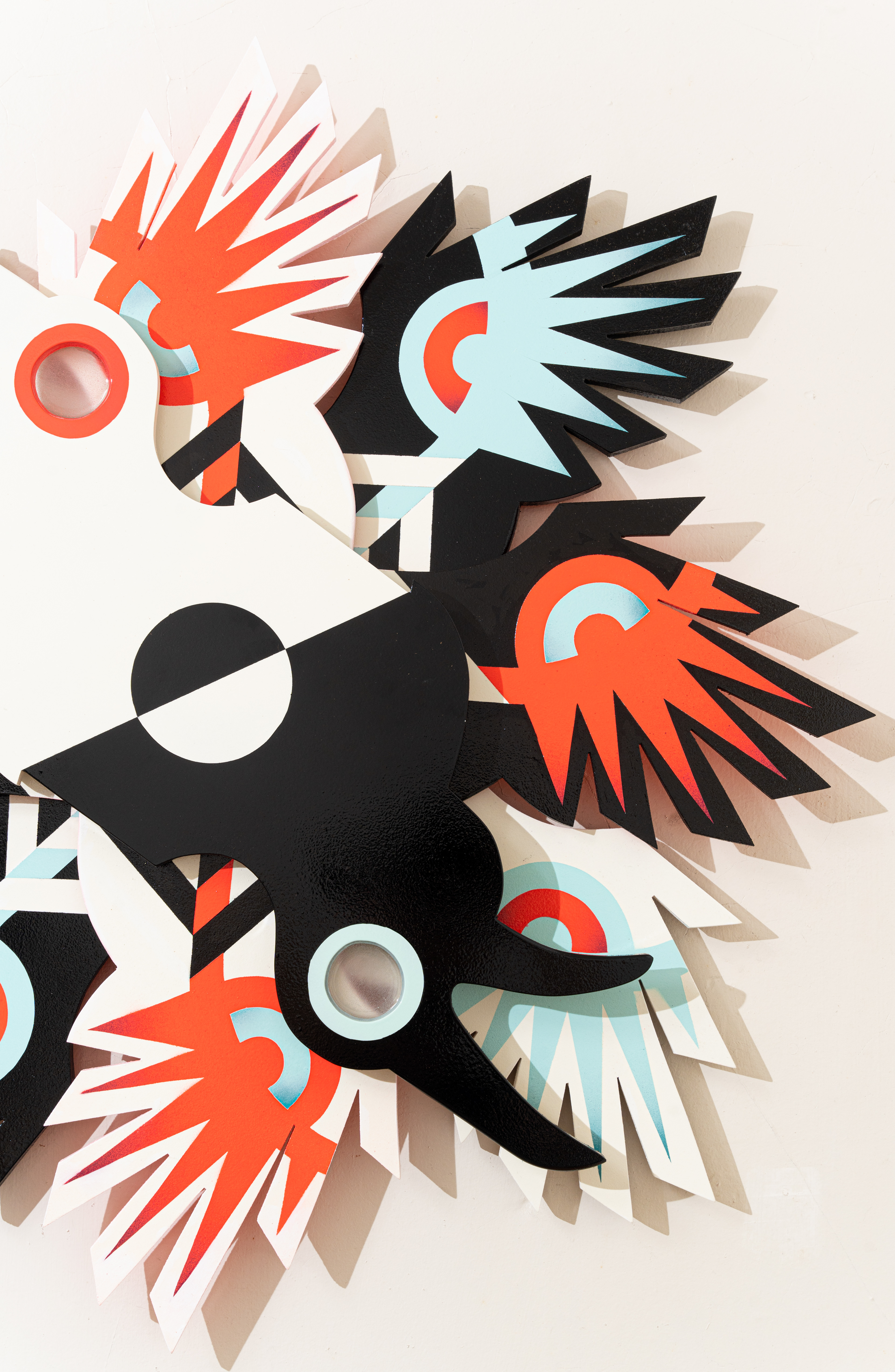'Ex Avibus' 2022 (SOLD)
36" x 36"
Wood, spray paint & resin
Augury is the practice from ancient Roman religion of interpreting omens from the observed behavior of birds. When the individual, known as the augur, interpreted these signs, it is referred to as "taking the auspices". 'Auspices' is from the Latin auspicium and auspex, literally "one who looks at birds." Depending upon the birds, the auspices from the gods could be favorable or unfavorable (auspicious or inauspicious). Sometimes politically motivated augurs would fabricate unfavorable auspices in order to delay certain state functions, such as elections. Pliny the Elder attributes the invention of auspicy to Tiresias the seer of Thebes, the generic model of a seer in the Greco-Roman literary culture.
This type of omen reading was already a millennium old in the time of Classical Greece: in the fourteenth-century BC diplomatic correspondence preserved in Egypt called the "Amarna correspondence", the practice was familiar to the king of Alasia in Cyprus who needed an 'eagle diviner' to be sent from Egypt. This earlier, indigenous practice of divining by bird signs, familiar in the figure of Calchas, the bird-diviner to Agamemnon, who led the army (Iliad I.69), was largely replaced by sacrifice-divination through inspection of the sacrificial victim's liver—haruspices—during the Orientalizing period of archaic Greek culture.
Photos courtesy Will Crooks.





